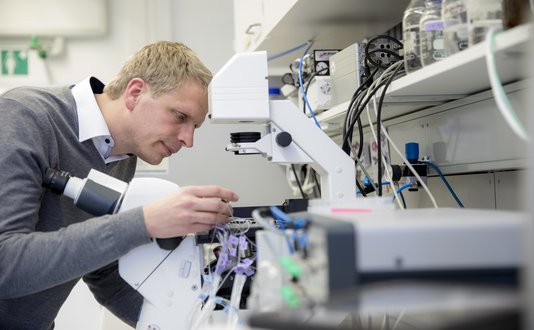PioneerCampus Bioengineers Provide Fundamental Knowledge on Neovascularization in a 3D Microenvironment
An in vitro roadmap guiding vascularization in tissue engineering
With the dilemma of the need for organ transplants by far surpassing available donor organs, the number of patients dying while waiting for a suitable transplant will inevitably increase. While tissue engineering approaches could overcome organ shortage, developing sizeable, living organ replacements with functional vascular networks that coalesce with the host circulation remains a key challenge in the field.
Although current in vitro approaches towards engineered vascularization are as numerous as tissue-engineering methods themselves, they are usually optimized for ease of use and analysis rather than being clinically applicable. Moreover, the developmental factors determining endothelial cell formation, maturation, and specification are still not fully defined. Therefore, a fundamental prerequisite for neovascularization in engineered tissue is a better understanding of the dynamics of microvascular biology in conjunction with its spatio-temporal regulation via extracellular matrix components, vasculogenic and angiogenic factors.
In a recent study published in Stem Cell Reports, a cross-departmental and cross-institutional team under the leadership of Matthias Meier investigated in vitro neovascularization in various 3D microenvironments using human induced pluripotent stem cells (hiPSCs). Their time-resolved, single-cell transcriptomic analyses of the (co-)evolving cells gave crucial insights into cell type development, stability, and plasticity. Additionally, subsequent transfer of the cells to a 3D hydrogel promoted neovascularization and enabled tracing of migration, coalescence, and tubule formation. Most importantly, computational analysis of ligand-target interactions revealed signaling factors and ligand-receptor interactions with angiogenic function feeding into a thorough in vivo validation that ultimately led to a list of signaling molecules acting between pericytes and endothelial cells during vasculogenesis.
The deep characterization of the neovascularization process enables the engineering of stem cell-derived ECs for complex vascularized in vitro tissues. This is of particular relevance for in vitro modelling of metabolically active adipose tissue and pancreatic islets for transplantation.
Overall, the results of this study provide invaluable resources for future tissue engineering approaches with broad translational implications across regenerative medicine.
Original publication
Rosowski et. at. (2023): Single-cell characterization of neovascularization using hiPSC-derived endothelial cells in a 3D microenvironment. Stem Cell Reports. DOI:10.1016/j.stemcr.2023.08.008
New adapted from Helmholtz Pioneer Campus









